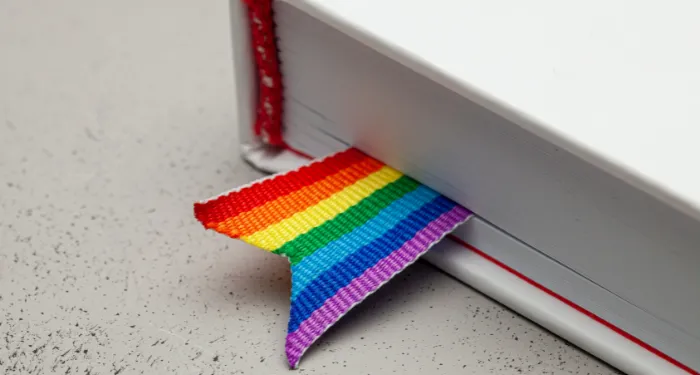James Broadnax spends nearly all his time alone, locked in a concrete cell in a remote corner of eastern Texas. When he was twenty, a nearly all-white jury sentenced Broadnax, who is black, to death for murdering two white people. He is now thirty-six, having spent the past decade and a half awaiting his execution in near-constant isolation. Prison rules promise him two hours of recreation on most days, but guards routinely withhold even that reprieve. To steel himself against the monotony, he keeps up an exercise routine and reads whatever books he can get his hands on. He has also devoted his time to a more urgent goal: contesting his capital conviction. “I am fighting for my life to not receive an execution date by the state of Texas,” he wrote in a 2022 letter.
That fight led him to the Supreme Court. In September 2023 Broadnax asked the justices to throw out death as punishment for his crimes on the grounds that Dallas prosecutors had weaponized race to secure his conviction. Before his trial began in the summer of 2009, his petition showed, they singled out all the black people in the jury pool, expressed concern in writing about one black juror’s race, and struck every eligible black candidate (though the judge later reinstated one); during the proceedings, they told the resulting jury that Broadnax was a primal “predator” with a taste for “human blood,” hell-bent on harming “rich white folks.”
Such tactics were a blatant violation of Supreme Court precedent, most notably in a 1986 case called Batson v. Kentucky, which safeguards equal protection at trial by barring racially discriminatory practices in jury selection. Yet the conservative judges on lower state and federal courts who heard Broadnax’s case defied the basic commands of Batson and related precedent. In late June 2024 the Supreme Court itself followed suit, refusing to hear his plea.
Just days after rejecting his petition, the conservative majority turned away a similar one from Warren King, another black death row defendant in the south whose case presented stark evidence of racial discrimination. The prosecutor had systematically eliminated almost every black person from the jury pool. When challenged, he made the extraordinary admission that one of his “main reason[s]” for striking a particular juror was that she was a “black female.” He then launched into a remarkable diatribe against Batson itself, declaring that he had an “issue” with the precedent and condemning the “whole process” it requires as “improper” and “wrong.”
This was not subtle discrimination masked by pretextual explanations—it was open defiance of constitutional principles. Yet both state and federal appellate courts found no Batson violation, treating the prosecutor’s explicit racial bias and contempt for Supreme Court precedent as unremarkable. The Supreme Court couldn’t be bothered to remark on it either.
For prisoners like Broadnax and King, such judicial indifference is not anomalous but routine. Nor is it limited to Batson cases. Since Justice Amy Coney Barrett joined in 2020 and bolstered the conservative justices’ agenda-setting powers, the Court has again and again refused to hear inmates’ cases, even when, like Broadnax and King, they have the most persuasive legal claims. These petitions do not ask for new rights or expanded protections—only that the Court enforce its existing rulings when lower courts ignore them. Almost always filed by black men, they’ve come to the Court from every corner of the country, especially Republican states and rural districts: from California (Johnny Duane Miles) to Illinois (Charmell Brown), Missouri (Marcellus Williams) to Mississippi (Tony Terrell Clark), Louisiana (Travis Boys) to Texas (Dillon Compton, Ker’Sean Olajuwa Ramey). All have met the same fate.
Days after turning away Broadnax, the Court handed down its major decisions of the year, which went on to dominate public discourse. Manufacturing unprecedented immunity for Donald Trump, dismantling environmental protections, curbing the rights of homeless people, and unraveling the administrative state: critics often point to such rulings when they describe today’s Supreme Court as a rogue institution asserting itself to reshape society. Yet these rejected cases, nearly all of them barely noticed, reveal as much about today’s conservative majority.
The Court’s formal docket has shrunk dramatically, from 129 signed opinions in the 1989 term to fewer than sixty in recent ones. This contraction reflects not just a reduced workload but a shift in institutional priorities. Even as they intervene to protect and create certain rights, the Court’s conservatives seem all too ready to let others decay. They erect procedural barriers to reject claims they disfavor while finding creative ways around those same barriers for causes they champion. The overreach of the modern Court, in other words, lies not just in its actions but its apathy, not just its dramatic interventions but its strategic neglect. When it comes to upholding its own precedents that protect the most vulnerable, the Court has often retreated into silence—leaving fundamental rights to wither.
*
Law schools invariably teach first-year students that the Supreme Court’s mission transcends mere error correction. Rather than rectify mistakes in individual cases, this notion goes, the Court resolves important questions of constitutional and federal law and articulates broad legal principles, often using deliberately ambiguous language to guide the resolution of future cases under unforeseen circumstances. Its certiorari jurisdiction—the discretionary power to select which cases it will hear—protects and reinforces that elevated purpose.
This has, however, long been a reductive understanding of what the Court does. For most of its history the justices understood their role precisely as correcting legal errors, even in cases that seemed inconsequential. As Benjamin Salinger, a justice of the Iowa Supreme Court, put it in 1922, the “great function” of the United States Supreme Court is to afford “the citizen” redress, “not as a matter of grace or of discretion but as of right.”
Only around that time did the Court start positioning itself as a selective arbiter of significant cases. In the middle of the decade Chief Justice William Howard Taft succeeded at pushing Congress to pass the Judiciary Act of 1925, which changed how cases reached the Court. Where once they had been required to hear most appeals, now the justices could exercise significantly more discretion over what they took up. As the legal scholar Gregory Hankin noted in 1928, the Court transformed in the process from a “court of last resort” focused on resolving individual disputes to a “ministry of justice” that shaped law at the national level.
In the decades that followed, the Court heard fewer cases overall, and many fewer cases that private litigants cast as matters of error correction. Meanwhile it embraced its new identity as the “ministry of justice” with verve, cultivating a reputation as the ultimate body for resolving constitutional and statutory questions of national significance. As Justice Felix Frankfurter wrote in Wilkenson v. McCarthy (1949), the Court had a responsibility “of granting review only in cases that demand adjudication on the basis of importance to the operation of our federal system; importance of the outcome merely to the parties is not enough.” This vision is central to the Court today, but it was neither historically inevitable nor inherent to the institution’s design.
It also presents an analytical challenge. Because the Court itself determines which cases count as cert-worthy, there can be a tautological quality to its determinations. A seemingly mundane dispute can become a landmark case simply because the Court grants review. More generally, the Court’s certiorari decisions reflect the justices’ political and philosophical values at any given time. The liberal midcentury Warren Court and today’s conservative Roberts Court both criticized error correction in principle—but in practice the former frequently prioritized taking cases alleging errors involving criminal defendants’ rights, much as the latter now prioritizes cases alleging errors involving conservative Christians, Republican Party activists, and businesses enforcing arbitration agreements.
Error correction, in other words, never quite went away—the Court merely pursued it selectively and by other names. Occasionally, and usually inadvertently, justices admit as much. In 2022, for example, a three-judge district court found that Alabama’s congressional district map discriminated against black voters and likely violated the Voting Rights Act. Five conservative justices stayed the order, letting Alabama use a map in the 2022 election that illegally diluted black voting power and secured Republicans an extra congressional seat. Chief Justice John Roberts, dissenting alongside the liberal justices, objected that the trial court had “properly applied existing law in an extensive opinion with no apparent errors for our correction,” suggesting that his conservative colleagues’ intervention might have been justified if there had been apparent ones.
*
Broadnax’s life has been marked by violence, only some of which he committed. In a jailhouse interview not long after the murders, he described his childhood simply as “hell”—a description that testimony at his trial would bear out. He never met or knew much about his father. Multiple trial testimonies demonstrated that his mother’s physical abuse left him bloodied and emotionally broken. For much of his childhood he shuffled between distant and indifferent relatives; the only constant was the drug use all around him. From death row, he wrote of the life that delivered him here: “being separated from siblings; watching friends die from gang violence; gin and curvy roads; being sentenced to death; watching brothers be escorted away from Death Watch and never return.” His story is both a confession and an indictment—of grave crimes he committed as a teenager and the systemic failures that derailed his life before it began.
One of these systemic failures was the legal process that condemned him to die, which was riddled with obvious constitutional violations. The Dallas prosecutors used almost half their peremptory challenges—ones that do not require giving a reason—to eliminate all seven black prospective jurors from a pool of forty-seven qualified candidates, who had themselves already been winnowed to include only people comfortable with imposing the death penalty. They only, in contrast, removed less than a fifth of white jurors from the same pool. The documents they used during jury selection, which they hid from Broadnax for years, confirm the machinery of discrimination betrayed by these statistics: having collected color photographs of each potential juror, they maintained a spreadsheet tracking the candidates by race with black people (and no one else) marked in bold. In one case they left a handwritten note stating that their “only concern” about one black juror was his son’s “age [and] race.”
These were precisely the kinds of blatant calculation that the Court forbade when it held, in Batson, that prosecutors cannot discriminate against jurors based on race. Indeed, in a case called Miller-El v. Dretke (2005), the Court had already rebuked prosecutors from the same Dallas office for their “culture” of “bias against African-Americans in jury selection.” Its 6–3 majority opinion reiterated that even a single instance of racial discrimination against a prospective juror was impermissible.
Broadnax’s trial judge not only declined to enforce that precedent; he disclosed that he had a “problem” with the “whole line” of Batson cases. “If you grant a Batson challenge,” he said in a pretrial hearing, “it implies some sort of nefarious intent on the part of the prosecutors.” Even as the judge acknowledged the “disproportionate number of African-Americans who were struck” during selection, he chose to ignore the clear evidence of discrimination lest it be construed as proof that “prosecutors are lying.” It was as if he was more preoccupied with the possibility of hurting the prosecutors’ feelings than with protecting Broadnax’s constitutional rights.1
When the prosecutors disclosed their internal documents to Broadnax in 2016 and 2021, following a change in their internal policies, he found himself in a procedural labyrinth. Conservative judges in federal trial and appeals courts held they would not even look at the new evidence because it was not part of the original state record. In any case, they suggested, the new evidence would not support a Batson claim. The Fifth Circuit’s opinion, authored by the hardliner Judge Edith Jones, bizarrely pointed to the Dallas prosecutors’ office’s long history of racial discrimination as a basis to presume they were not discriminating in this case: precisely because they had been repeatedly sanctioned for racially discriminating among potential jurors, she argued, they would have been careful to avoid such practices this time around. And when Broadnax returned to the state court, the Texas Court of Criminal Appeals dismissed his petition without even looking at the new evidence.
Having authored the “whole line” of Batson cases, the Supreme Court had the responsibility to correct these insubordinate inferior courts. Instead it simply issued an unsigned order denying certiorari. Two of the Court’s three liberals, Justices Sonia Sotomayor and Ketanji Brown Jackson, noted that they would have not just granted certiorari but summarily reversed—indicating that they found the lower court’s ruling upholding the death sentence so wrong that it could be overturned without briefing and argument. But without four votes to grant certiorari, the liberals lacked the agenda-setting authority.
*
The Court’s refusal to correct the errors in such cases is troubling on multiple levels. For prisoners like Broadnax and King, who face the ultimate punishment because of legal processes corrupted by racial discrimination, the majority’s decisions are of course profound betrayals. They also effectively reward prosecutors for engaging in racial discrimination, giving them a perverse incentive to conceal the strongest evidence of their wrongdoing.
Perhaps most pernicious, however, is what the Court’s denials telegraph to lower courts. For conservative firebrands like Edith Jones, they signal that there may be no real consequences for disregarding or defying the Court’s own precedent. The Court’s conservatives know that many federal and state courts, particularly in circuits like the Fifth, have in recent years become bastions of right-wing extremism and legal adventurism. By conveying that certain rights—and the people they protect—are not worth their attention, the justices are emboldening those lower courts to dismantle precedents like Batson, accelerating a radical jurisprudential shift without drawing unwelcome scrutiny.
When lower courts charge too far ahead, the Court can ostentatiously rebuke them. (In May 2024, for instance, seven of the justices reversed a Fifth Circuit decision that would have eviscerated the Consumer Financial Protection Bureau and called into question all of its enforcement actions.) But where the lower courts merely disregard the precedents of past Supreme Courts, as in Broadnax’s case, their defiance is often met with approving silence. The Court is, in this respect, implicitly sorting existing law into a hierarchy: precedents issued by past courts, like Batson, have less weight the further they stray from the ideology of conservative judges today.
The result is a destructive cycle. As more courts excuse discrimination, the practice becomes normalized, making future judges even likelier to dismiss evidence of bias as routine. What began as a clear constitutional error hardens, with the highest court’s tacit permission, into the entrenched law of the very places with the most punitive approach to criminal justice and the longest histories of de jure discrimination. This is the paradox of today’s Court: even as it aggressively reshapes society through rulings that have tarnished its institutional legitimacy, it retreats from its foundational duty to ensure equal justice under the law for people who, like Broadnax, have nowhere else to turn.


















 English (US) ·
English (US) ·